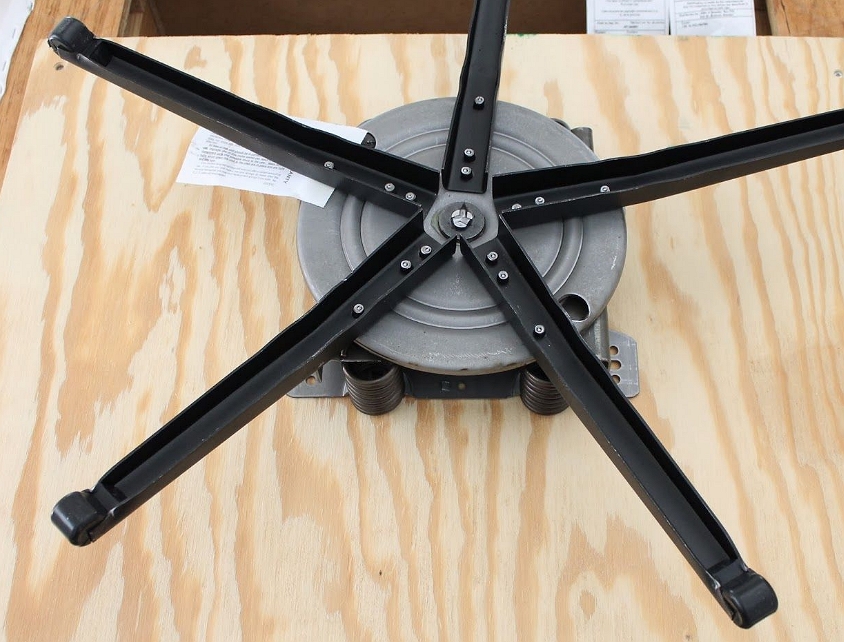A swivel chair is a great addition to any home office. They are also stylish and functional! The best part? They’re not too difficult to make either, so you can enjoy the personalized comforts of your own swivel chair in no time at all.
Hopefully, this article has given you some inspiration for how to make a swivel chair design.

Steps on Making a Swivel Chair
Materials Needed
- Fabric or leather of choice (approximately two yards)
- Screws and screwdriver for assembly, preferably with Phillips’s head if available.
- One yard of double-sided tape for attaching the seat cushion to the frame. Optional but recommended! I recommend the tape from Duck Brand. It’s durable and looks great!
- Wood glue, clamps, drill bits for pilot holes and screws (optional)
- Measuring tape or yardstick to apply the measurements correctly as well as a pencil/pen
- The yardstick to measure how long the screws should be.
- Power screwdriver or cordless drill for drilling pilot holes and driving in screws
- Craft knife, scissors, ruler if necessary.
Instructions: How to Make a Swivel Chair
Step One – Constructing Frame of Chair Seat Base: how to make a swivel chair
Measure how long the screws should be for attaching the seat base to the frame.
Attach a piece of double-sided tape to one side of the front edge and rear edge (the two pieces that would meet in an “L” shape) of your seat cushion with enough overhang on all four sides for swiveling without needing to move the entire cushion.
Step Two – Attaching Seat Base to Frame: how to make a swivel chair
Measure how long the screws should be for attaching seat base to frame and drill two pilot holes in each of these areas with a power screwdriver or cordless drill, then take away the tape that is not needed anymore by cutting it with scissors
Attach seat base to frame, using the screws and a power screwdriver or cordless drill.
Make sure it is level by measuring how high from the floor both of your pilot holes are in relationship to one another on either side of your swivel chair’s front edge. If they don’t match up then use a level to adjust how high the front of your seat base is and then re-attach.
Step Three – Attaching Fabric: how to make a swivel chair
Measure how long the fabric should be by running it from one side of the back edge, over both sides of the seat frame, and onto another side on top as far as you want it to go.
Measure how wide the fabric should be by laying the material flat on a table and measuring how many inches there are from the front edge of the frame, over both sides, back down onto another side as far as desired.
Take this measurement then double that length because once your swivel chair is assembled with the fabric on and you want to put it away, there will be excess material.
Find how many inches of fabric should go over each side (if measuring from the front edge) by multiplying that number by two then add one inch for seam allowance — so if your swivel chair is 20″ wide then 40 would go over both sides with one inch for seam allowance.
Cut the material to size then use a straight pin at each side of the fabric and sew it in place with ¾” seam allowance, leaving one end open so you can turn it right side out.
Step Four – Turn the fabric right-side out by taking two corners on either side that are still inside and pulling them out.
Use the iron to press both sides of the fabric flat, then fold in half and pin it together so you can stitch up that end with ¾” seam allowance (remembering to leave a one-inch opening at the bottom for turning).
Leave an inch or two on each side unstitched where your arm will go through, which will eventually be sewn to the frame.
When you’re sewing on the armrests, make sure they are both oriented in opposite directions so that when one is up and one is down your chair can swivel smoothly back and forth, with a little bit of play for turning around corners.
Step Five – The last step is attaching casters to the four corners of your frame with screws, washers, and nuts. The casters should be about an inch in diameter so that they don’t get stuck on carpeting or floorboards.
How to Prevent Tearing on a Swivel Chair: The Problem With Arm Rests & Foot Pads
The main problem with armrests is that they are often too short or made of loose fabric which can get caught up in the wheel mechanism. The solution for this problem is to sew the armrests a little higher than normal or attach them with Velcro so that they can be removed when needed.
The other problem is that foot pads will come loose and get caught up in the wheel mechanism, which often leads to the tearing of fabric on your swivel chair. The solution for this problem is to use felt (or a fabric of your choice) to cover the entire footpad and attach it with Velcro.
